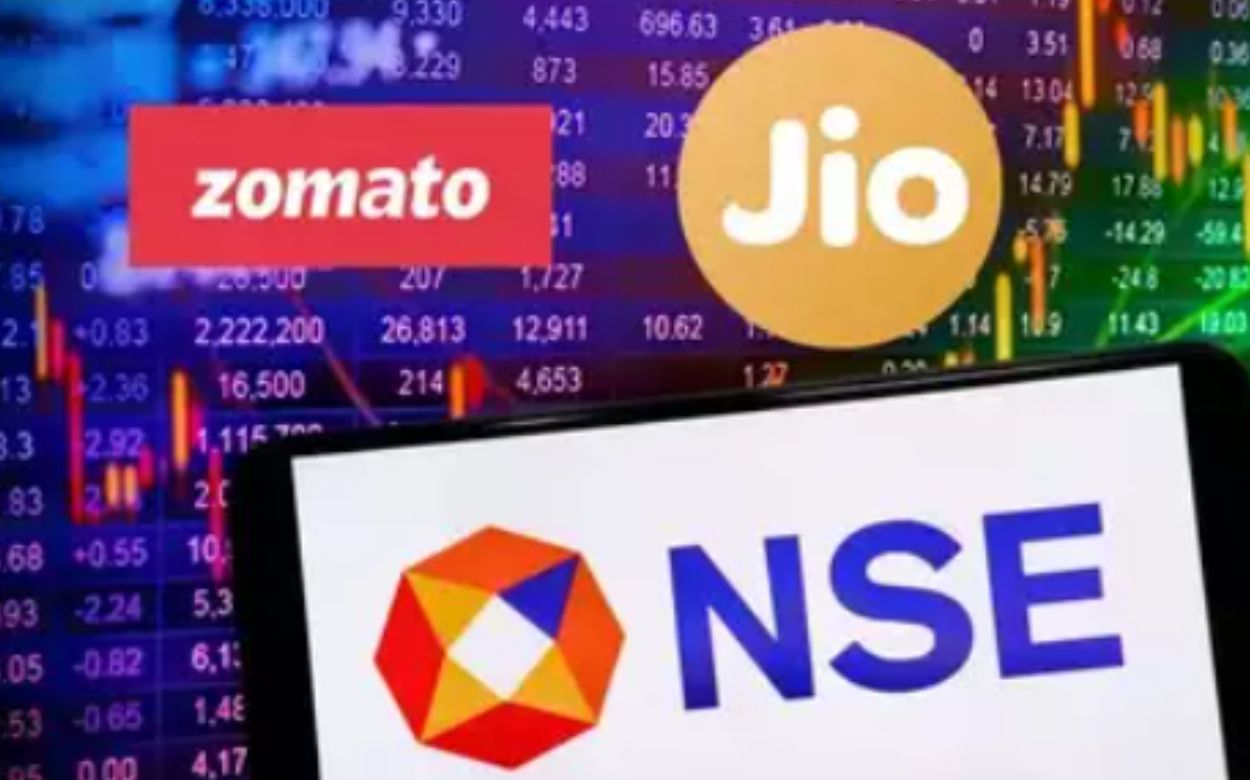Including Zomato and Jio Financial Services would raise the price of the Nifty 50. The Reason is here
Adding new-age tech businesses Zomato and Jio Financial Services to the benchmark Nifty 50 is estimated to boost the index’s value by 2.5%. Zomato and Jio Financial Services will join the Indian stock market benchmark index Nifty 50 on March 28, 2025, as the National Stock Exchange (NSE) stated in the forthcoming semi-annual indices rearrangement. Zomato, the food delivery behemoth, and Reliance Industries’ non-banking financial unit, Jio Financial Services Ltd, will replace state-run oil refiner Bharat Petroleum Corporation Ltd. (BPCL) and FMCG major Britannia Industries in the Nifty 50 index.
Nifty 50 Valuations To Inject:
By the end of March 2025, Zomato and Jio Financial Services would replace BPCL and Britannia Industries, which have trailing price-to-earnings (P/E) ratios of 8x and ~57x, respectively, in the Nifty 50 index. According to ICICI Securities, this adjustment might cause the Nifty 50 P/E ratio to rise by 2.5% on a trailing basis, from 22.1x to 22.6x. Since 2018, new-age stocks in areas such as insurance, fintech, organized retail, consumer, and healthcare industries have entered the Nifty 50 at the expense of old economy stocks in sectors like oil and gas, industrials, and conventional banks.
Inputs and Outputs:
The forthcoming adjustments to the Nifty 50 index are likely to generate considerable money flows from passive investors. The brokerage company forecasts purchasing worth ₹5,900 crores (~3x ADTO) for Zomato and ₹3,000 crores (~5x ADTO) for Jio Financial Services and selling worth ₹2,300 crores (~11x ADTO) for Britannia Industries and ₹1,900 crores (~6x ADTO) for BPCL from Nifty 50 ETF funds, according to Karki.
Financials and energy stocks are still cheap:
The banking and energy sectors account for 52% of the Nifty 50 index’s total earnings. According to the brokerage business, despite an overall increase in Nifty values, this profit pool has seen a 40% decrease in valuation since 2018, with the price-to-earnings (P/E) ratio falling from 26x to 16x and the price-to-book (P/B) ratio remaining steady at about 2.6x. Meanwhile, P/E multiples in the IT, consumer discretionary, and industrial sectors have increased the most since 2018.







